Prescription drug monitoring programs have been implemented throughout the country as a method of tracking and regulating prescriptions for narcotic painkillers and other drugs. Many states have some form of the tool that requests doctors and pharmacies to enter patient information into a database to help prevent addicts from fraudulently getting more pills. However, most regions have not mandated the use of the monitoring system, which renders them fairly inadequate.
One of the most alarming aspects of prescription drug abuse is that oftentimes the doctor turns into the drug dealer, whether knowingly or as a willing participant. While there are some instances of doctors intentionally taking on this role, usually physicians are responding to made up or trumped up ailments. This is where the prescription monitoring programs help determine if patients are doctor shopping for more pills.
The utilization of these tools not only helps prevent doctors and pharmacists from handing out drugs to people abusing them, but it also helps to ensure that patients with real pain issues are not denied their medications.
The effort among pharmacists, legislators and regulators trying to have better control over these substances has seemingly helped reduce some of the prescription drug problem, and more can be done in the medical community as well. A recent survey by Johns Hopkins reported that 85 percent of physicians believe that their peers are over-prescribing these painkillers.
Educating doctors even more on signs of substance abuse, and specifically if someone may be suffering from an addiction to painkillers, is also vital in stopping the prescription drug abuse numbers from increasing. Unfortunately, many people who become dependent on painkillers were given by a prescription at first, and then the problem escalated. Finding more ways to treat pain without narcotics would be a huge benefit to doctors as well as patients.







